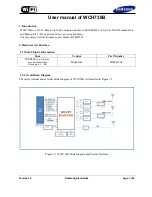
i
Contents
1 Preparing for installation ······························································· 1-1
2 Installing the AP ········································································· 2-1
3 Appendix A Technical specifications ··············································· 3-1
4 Appendix B Ports and LEDs ·························································· 4-1































